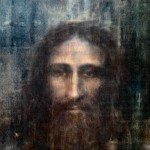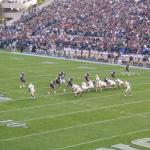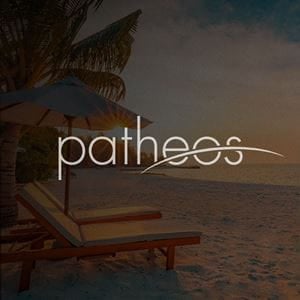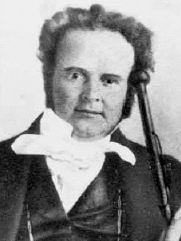
For many years now, my most devoted atheist commenter here (never a Latter-day Saint) has repeatedly (and repetitiously) asserted that religious claims can neither be examined, tested, nor investigated. (Which, I’m guessing, is intended to show — in what might perhaps be a kind of folk echo or pop version of once-fashionable logical positivism — that such claims are nonsense. He never actually formulates an argument, so I’m left to speculate. But that seems to be what’s in the back of his mind.) Let’s call him “gemli.”
Anyway, I’ve lately been reading “Here is Brigham . . .:: Brigham Young, the Years to 1844, by S. Dilworth Young (Salt Lake City: Bookcraft, 1964). Elder Young (1897-1981) was a General Authority of the Church of Jesus Christ of Latter-day Saints from 1945 until his death. He was also a great-great nephew of Brigham Young. He wasn’t a scholar, but he was a good writer. And this particular book, which I had never read before, is both a pleasantly readable narrative and a richly informative one.
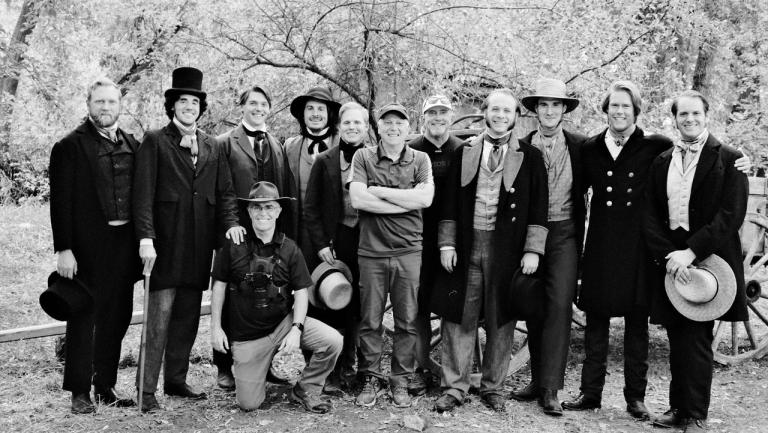
In the light of recent exchanges with this ardent atheist, though — I won’t call them a “conversation” — this passage struck me. I read it earlier this afternoon:
Brigham loved his family. As the demands of his new calling [to the apostleship in 1836] allowed, he always tried his best to convert his cousins, his uncles and his aunts. He had some success, but there were some of his kin who did not respond. And at no time did any of them join without careful investigation.
One of the most careful of these was Willard Richards, his first cousin. Willard had always shown an independence of spirit in family affairs. He had read a copy of the Book of Mormon and had been profoundly influenced by it. Twice reading through it, with a strong spirit of testimony accompanying the reading, convinced him that he must know more about it and the people from which it came. He commenced to arrange his affairs to visit Kirtland [the then headquarters of the Church, in Ohio], when he was stricken with palsy, which laid him low for a considerable period of time. Finally he was sufficiently recovered to be able to begin his journey, and with his brother Levi as his physician he managed to arrive in Kirtland in October of 1836. He sought out the house of Brigham and was promptly made welcome. Not only must he enter the home, but he must stay there, Brigham insisted.
Then followed nearly three months of most intense investigation. Willard was well versed in the Bible and in the tenets of the Protestants of his day. Every objection he raised was countered by Brigham; every doctrine was followed through and justified by the Bible; every error of doctrine common to the churches of the day was pointed out by Brigham, argued through, and the truth substituted in the mind of Willard. Every night that Brigham could be at home the discussion continued. And Willard talked to others. He heard and measured the stories and arguments of the apostates. He attended the services and heard the preaching of the brethren. He gained close acquaintanceship with the new book, “The Doctrine and Covenants,” having thus before his eyes the actual revelations of God and not just the “talk.” And he met Joseph Smith. For his physical comfort it would have been easier for him had he been able to accept the Gospel immediately. But that was not to be. Brigham had taken a year or so to think things through. Under Brigham’s influence Willard was convinced in three months. On December 30 he told Brigham he was ready for baptism.
Physical comfort was not considered. Heber C. Kimball with a few friends spent the afternoon cutting the ice on Chagrin Creek to prepare for the baptism and, once it was cleared, kept the water from freezing again. In the late afternoon as soon as a large enough place had been cleared, Brigham led his cousin into the water, and between gasps for breath pronounced the required words: “Willard Richards, having been commissioned of Jesus Christ, I baptize you in the name of the Father, and of the Son, and of the Holy Ghost. Amen.” Levi followed Willard into the waters of baptism. If the usual custom was followed the two men were immediately confirmed members of the Church and ordained elders.
Like Athena who sprang full grown from Zeus’ head, so Willard Richards was in the work among the leaders almost overnight. His ability and sincerity were immediately recognized. He began to have responsibility almost at once. He proved to be a powerful defender on the side of right. (157-158)
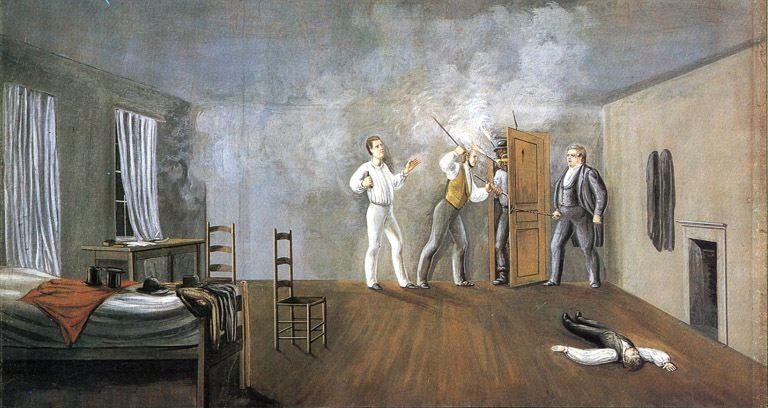
I would like, though, to offer a little further information on Willard Richards.
He was born in Hopkinton, Massachusetts, on June 24, 1804. At the age of four, he was injured in a fall and suffered some relatively minor but permanent physical disabilities. (The “palsy” that later delayed his journey to Kirtland, Ohio, for approximately a year was very possibly related to the persistent “tremors” that he suffered after his fall).
Young Willard was very inquisitive and a voracious reader, and this, too, had its aftereffects. For example, the local congregational minister resided in his parents’ household for roughly six months — and Willard was denied admission to that church because of his tendency to ask apparently unwelcome questions.
He earned a teacher’s certificate at age sixteen and taught school in both Chatham, New York, and Lanesborough, Massachusetts. He also pursued studies in physical mechanics and science, and learned to play the clarinet. At the age 27, he became an itinerant lecturer, traveling throughout New England in order to give lectures on various scientific subjects.
At the age of thirty, following the death of a sister, Willard decided to become a medical doctor. He studied at the Thomson Infirmary in Boston, where he focused on medications and herbal preparations. He then settled in Holliston, Massachusetts, where he practiced medicine.
Wikipedia says that Willard Richards was baptized on 31 December 1836, rather than on 30 December, and that he was ordained an elder on 6 March 1837.
In any event, he was one of the first Latter-day Saint missionaries to Great Britain, where he served for a total of four years. It was during his mission that he first married, and it was in England that he and his wife, Jennetta, welcomed (and lost) their firstborn child. It was also in England that he was ordained an apostle on 14 April 1840, under the hands of Brigham Young (though at the direction of Joseph Smith).
In Nauvoo, Illinois, Willard became both Joseph Smith’s private secretary and Nauvoo Temple recorder in December 1841. Twelve months later, in December 1842, he was appointed Church Historian and Recorder, a position that he held until his death. He wrote a total of 1,884 pages of Joseph Smith’s history, and what he wrote has been largely preserved in the so-called “Documentary History of the Church” — more properly The History of the Church of Jesus Christ of Latter-day Saints, edited by B. H. Roberts.
Willard Richards was with Joseph and Hyrum Smith at Carthage Jail, in Illinois, when they were murdered by an anti-Mormon mob and his fellow apostle, the Englishman John Taylor (the future third president of the Church of Jesus Christ of Latter-day Saints), was gravely wounded.
On 27 December 1847, at Council Bluffs, Iowa, Elder Richards was called as second counselor in the newly reorganized First Presidency of the Church of Jesus Christ of Latter-day Saints. He served in the First Presidency until his death in 1854, at only forty-nine years of age.
In Utah Territory, Elder Richards served as the first editor-in-chief of the Deseret News, as well as territorial secretary and president of the territorial council and postmaster of Salt Lake City.
Willard Richards was clearly, it seems to me, an unusually bright and capable man and, despite another oft-repeated claim of my atheist commenter, he doesn’t seem (despite being a theist) to have been obviously unaware of the reality of the world around him.
Nor does he seem to have accepted the claims of the Church of Jesus Christ of Latter-day Saints without thought or investigation. One might retort that his examination of those claims was insufficient, or that it didn’t involve sufficiently fundamental questions, or that it wasn’t informed by herpetology and other modern sciences. But to pretend that he (and his cousin Brigham Young before him, who investigated for a year) simply swallowed whatever assertions were served up to them uncritically and without thought is plainly contradictory to their genuine history.


